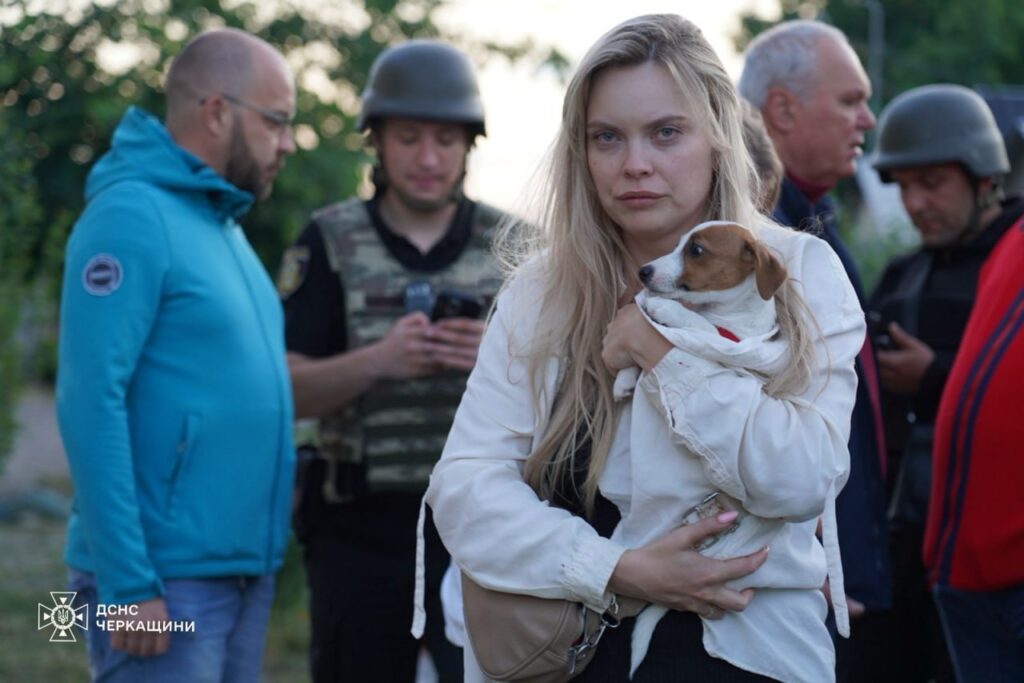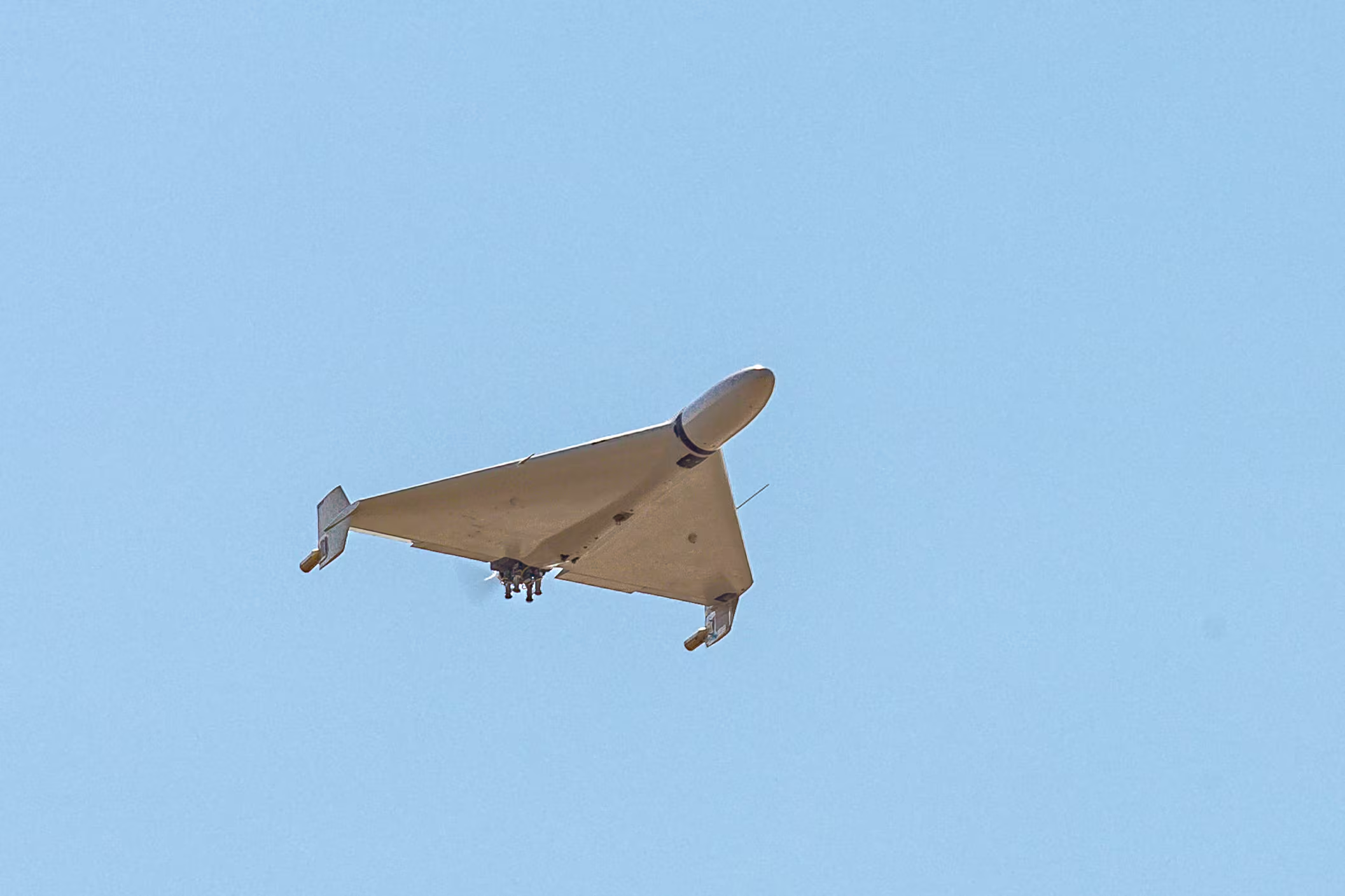Ukraine’s Air Force pilot Maksym Ustymenko, 32, died defending against Russia’s largest single-night aerial assault of the war, as Moscow launched 537 projectiles in a coordinated terror campaign targeting civilian infrastructure across the country.
The massive assault demonstrates Russia’s strategy of escalating terror attacks to pressure Ukraine into unfavorable peace negotiations. By overwhelming air defenses with record-breaking volumes of weapons, Moscow aims to demonstrate Ukraine’s vulnerability and create unbearable civilian casualties that force Kyiv to accept territorial concessions—using mass destruction as diplomatic leverage while Trump pushes for talks.

Russian forces deployed an unprecedented combination of 477 Shahed drones, 41 cruise missiles, seven ballistic missiles, and four hypersonic Kinzhal missiles during the 29 June overnight attack, according to Ukraine’s Air Force Command. Ukrainian defenders destroyed 475 of the aerial targets, but the massive scale overwhelmed some defensive capabilities.
“The pilot used the full range of onboard weapons and shot down seven air targets. During the last one, his plane was damaged and began to lose altitude. Maksym Ustymenko did his best to take the plane away from the settlement, but he did not have time to eject… He died like a hero!” the Air Force confirmed.
Russia launched the weapons from multiple staging areas including Kursk, Shatalovo, Orel, Bryansk, and Millerovo in Russia, as well as occupied Crimea and Black Sea positions, as detailed by Ukrainian Air Force, demonstrating the coordinated nature of the assault designed to stretch Ukrainian defensive resources across the entire country.
Ukrainian air defenses claimed an 88% interception rate despite the overwhelming numbers, shooting down 249 targets with weapons fire and electronically suppressing or causing 226 others to crash through electronic warfare systems.

The operation involved Ukraine’s aviation, surface-to-air missile units, electronic warfare divisions, mobile fire groups, and unmanned systems working in coordination. Debris from intercepted targets fell in eight areas across the country, per the official report.
The massive coordinated attack underscores Russia’s strategic shift toward using swarm tactics to saturate Ukrainian air defenses. The Iranian-designed Shaheds have become increasingly difficult to counter as Russia modifies their flight patterns, uses decoy drones, and launches them at higher altitudes to evade detection.
The attack comes as President Trump has suspended US military aid to Ukraine to pressure Kyiv into peace negotiations, according to multiple reports, while the US recently diverted 20,000 anti-drone rockets originally destined for Ukraine to Middle East operations before Israel’s strikes on Iran.
The loss of pilot Ustymenko highlights the personal cost of Ukraine’s air defense operations, as F-16 pilots face increasing risks from Russia’s evolving tactics and massive drone swarms that can overwhelm even sophisticated Western aircraft through sheer numbers.
The massive assault struck six locations across Ukraine, with debris from intercepted weapons falling in eight additional areas, according to the Air Force. While specific casualty figures from the 29 June attack have not yet been disclosed, the operation represents Russia’s continued escalation of its terror campaign against Ukrainian civilians, following recent patterns of strikes that have killed dozens and injured hundreds in single attacks.
The attack comes amid mounting civilian casualties from Russia’s intensified aerial campaign. Recent strikes have demonstrated the deadly effectiveness of Russia’s combined missile-drone tactics, with ballistic missiles proving particularly lethal due to Ukraine’s limited ability to intercept them without sufficient Patriot systems.

Israel hit Iran — Iran launched drones. Now we know why the US took Ukraine’s anti-drone defenses
Shaheds become more difficult to intercept
Russian Shahed drones have become increasingly difficult to intercept as Moscow adapts its tactics through swarm launches, radar decoys, and higher-altitude flight paths. The Iranian-designed weapons cost approximately $35,000 each but force Ukraine to expend more expensive interceptor missiles, creating an asymmetric warfare advantage for Russia.
The massive night attack occurs amid acute shortages of air defense ammunition.
Ukraine received only half of the Patriot systems it requested and operates just six operational batteries out of 25 needed for full coverage. The US refuses to share its 60+ Patriot arsenal while production constraints limit global output, and Europe lines up for 1,000 additional missiles.





